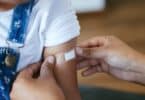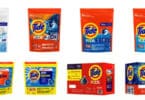Lead exposure in children under the age of 6 is a serious problem that can have devastating effects on their health. High levels of lead in the blood can lead to brain damage, behavior issues, anemia, damage to the liver and kidneys, hearing loss, hyperactivity, developmental delays, and even death in extreme cases.
There are numerous ways in which humans can be exposed to lead, including deteriorating paint, household dust, soil, air, drinking water, food, ceramics, home remedies, hair dyes, and cosmetics. It’s important to note that much of this lead is so tiny that it’s invisible to the naked eye. Sadly, many children with elevated blood lead levels are exposed to lead right in their own homes.
Up until 1978, lead paint was commonly used in both the interiors and exteriors of homes. Even today, an estimated 38 million homes in the US still have some lead paint. While intact lead paint is not an immediate concern, if it deteriorates, it becomes a hazard. Deteriorating lead paint can contaminate household dust and soil surrounding the house, where children often play. Any contact with this lead-contaminated dust or soil can easily lead to poisoning, as young children frequently put their hands in their mouths. Shockingly, just the equivalent of a single grain of salt worth of lead dust can raise a child’s blood lead level.
Despite a significant decrease in the number of children suffering from lead poisoning over the past few decades, it remains the top environmental threat to children, according to the CDC. The good news is that it is entirely preventable. The key is early detection through screening and immediate intervention when elevated blood lead levels are identified.
In a positive development for parents, the U.S. Food and Drug Administration has recently approved a new blood test that can measure lead exposure and provide results in just three minutes. This test only requires two drops of blood and eliminates the need to wait for costly lab results or spend time trying to reach patients for follow-up care. It can also be combined with other routine blood tests.
The test determines the amount of lead found in one deciliter of a child’s blood. Currently, a child should have less than 10 micrograms per deciliter (10 ug/dL) of blood lead concentration. If the level is higher, some steps can be taken to address the issue.
A blood lead level between 10-19 indicates mild lead poisoning, and the child should be retested in a few months. The child’s home and all the places they spend time should be checked for lead sources, which should then be controlled. Regular wet cleaning and handwashing can aid in reducing lead dust, and a healthy diet can help the child combat lead.
A blood lead level between 20-44 signifies moderate lead poisoning. Sources of lead in the child’s environment must be removed, and the child may require chelation therapy to eliminate lead from the body. Chelation therapy involves administering a drug that binds with lead and reduces its acute toxicity. It’s important to note that all medications have potential side effects and should be used with caution.
A blood lead concentration of 45-69 is considered severe lead poisoning, necessitating both medical treatment and the removal of lead from the child’s environment.
If a child’s blood lead level tests over 70, it is considered an acute medical emergency. The child may need to be hospitalized for treatment and will only be released once they can return to a lead-free and safe home environment.
Some tips to prevent lead exposure:
- Keep children away from peeling or chipping paint and accessible or chewable surfaces painted with lead-based paint, especially windows, window sills, and window wells.
- Wet mop and wet wipe hard surfaces, using trisodium phosphate detergent (found at hardware stores) or automatic dishwasher soap and water.
- Do not vacuum hard surfaces because this activity is believed to scatter dust.
- Wash children’s hands and faces before they eat.
- Wash toys and pacifiers frequently
- Do not store food in open cans, especially imported cans. Do not store or serve food in pottery that is meant for decorative use. Also, do not store food or beverages in lead crystal or china.
- If soil around the home is likely to be lead-contaminated (such as around a home built before 1960 or near a major highway), plant grass or other ground cover. If lead-based paint is the source of soil contamination, most lead will be near painted surfaces such as exterior walls. In such cases, plant bushes next to the house to keep children away. If the soil is contaminated with lead, provide a sandbox with a solid bottom and top cover, and clean sand for children to play and dig in.






